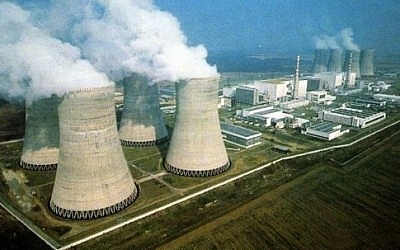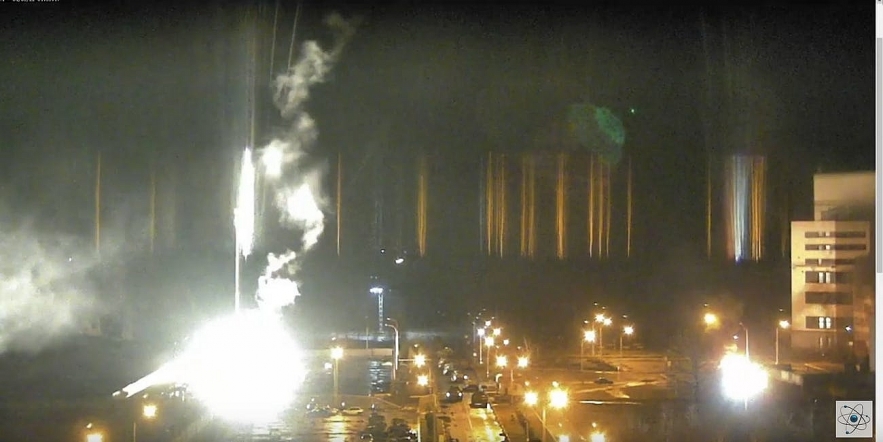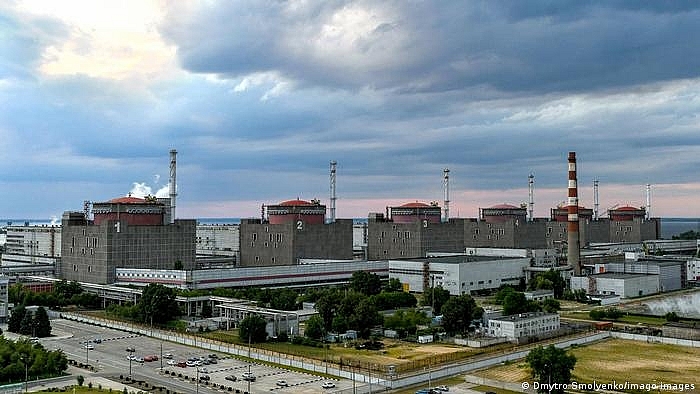Zaporizhzhia - Ukraine’s Largest Nuclear Plant with 6 Reactors
 |
| Zaporizhzhia Nuclear Power Plant |
Ukrainian authorities say Russian forces have seized control of the Zaporizhzhia nuclear power plant, the largest such facility in Europe.
Ukrainian nuclear plant, Europe's largest, ablaze
Friday morning (March 4), Ukraine's foreign minister, Dmytro Kuleba, tweeted, "Russian army is firing from all sides upon Zaporizhzhia NPP, the largest nuclear power plant in Europe. Fire has already broke out."
Kuleba added, "If it blows up, it will be 10 times larger than Chernobyl! Russians must IMMEDIATELY cease the fire, allow firefighters, establish a security zone!"
Ukraine's energy ministry told Russia's RIA news agency that firefighters are unable to tend to the blaze at the plant as Russian troops continue to fire on them.
Plant spokesman Andry Tuz said shells were striking the plant and one of the six reactors was on fire. He said the reactor that was hit was under renovation and therefore nonoperational. Tuz said it was imperative to cease fighting so firefighters could contain the blaze.
Firefighters cannot get near the fire because they are being shot at, Tuz said.
 |
| Smoke and fires could be seen near the Zaporizhzhia Nuclear Power Plant in Ukraine. Screenshot/YouTube |
A live-streamed security camera linked from the homepage of the nuclear power plant showed what appeared to be armored vehicles rolling into the facility’s parking lot and shining spotlights on the building where the camera was mounted. There are then what appear to be bright muzzle flashes from vehicles and then nearly simultaneous explosions in the surrounding buildings. Smoke then rises and drifts across the frame, AP reported.
A video live stream from the plant appeared to show at least one building in flames, as well as intermittent explosions — setting off car alarms in the parking lot — tracer rounds, and a column of armored vehicles outside.
The International Atomic Energy Agency said in a tweet that it was "aware of reports of shelling" at the power plant and was in contact with Ukrainian authorities about situation.
Russian forces are battling for control of a crucial energy-producing city in Ukraine’s south and closing in on the country’s largest nuclear power plant.
Russian tanks and infantry on Thursday entered Enerhodar, a city on the Dnieper River that accounts for about one-quarter of Ukraine’s power generation.
| Russia has already captured the defunct Chernobyl plant, some 100 km north of Ukraine's capital, Kyiv. |
Greenpeace International reprted: In the case of an accidental bombing and certainly in case of a deliberate attack, the consequences could be catastrophic, well beyond the impact of the Fukushima nuclear disaster in 2011. Because of the vulnerability of the nuclear power plants, its dependency on a complex set of support systems, and the long period of time it takes to bring the power plant into a more passive safety level, the only way to substantially reduce the risks is to halt the war.
 |
| Ukrainian officials report a fire at the Zaporizhzhia nuclear plant after it was shelled by Russia. |
Facts About Ukraine’s Largest Nuclear Plant
Russia has informed the International Atomic Energy Agency (IAEA) that its military forces have taken control of the territory around Ukraine’s Zaporizhzhia Nuclear Power Plant (NPP), Director General Rafael Mariano Grossi said March 2.
The Zaporizhzhia nuclear power facility in eastern Ukraine is the site with the most reactors offline. It lies north of Crimea astride one of Russia’s main invasion routes. The site is the largest nuclear reactor complex in not only Ukraine but Europe, and three of its six reactors are currently generating no electricity.
Earlier on 1 March, Ukraine informed the IAEA that all its nuclear power plants remained under the control of the national operator. In an update this morning, the State Nuclear Regulatory Inspectorate of Ukraine (SNRIU) said it maintained communications with the country’s nuclear facilities and that the NPPs continued to operate normally.
The Zaporizhzhia plant is the largest of Ukraine’s NPP sites with six out of the country’s 15 nuclear energy reactors.
Zaporizhzhia plant — Ukraine’s largest nuclear power plant — have continued their work on providing nuclear safety and monitoring radiation in normal mode of operation, and “the radiation levels remain normal.”
In a letter addressed to the Director General and received on 1 March, the Acting Chief State Inspector of SNRIU has requested for IAEA to provide immediate assistance in coordinating activities in relation to the safety of the Chornobyl NPP and other nuclear facilities. The Director General will be holding consultations and maintain contacts in order to address this request.
The Director General has repeatedly stressed that any military or other action that could threaten the safety or security of Ukraine’s nuclear power plants must be avoided. He also said that operating staff must be able to fulfil their safety and security duties and have the capacity to make decisions free of undue pressure.
The IAEA continues to closely monitor developments in Ukraine, with a special focus on the safety and security of its nuclear power reactors. The IAEA remains in constant contact with its counterpart and will continue to provide regular updates on the situation in Ukraine.
Six of Ukraine’s 15 working nuclear reactors have stopped sending power into the nation’s electrical grid — a high rate of disconnection compared with routine operations before the Russian invasion. The reduction in output might result from the war’s interference with operation of the plants, which require a wealth of industrial supplies and care, NYT reported.
Ukraine has four sprawling complexes in different parts of the country that host its 15 operational reactors.
 Facts About 'Nuclear Football' Briefcase of the U.S President: History, Inside and Red Button Facts About 'Nuclear Football' Briefcase of the U.S President: History, Inside and Red Button Nuclear Football, the powerful and mysterious briefcase that always follows the U.S President everywhere can be able to launch a nuclear attack. So, what is ... |























